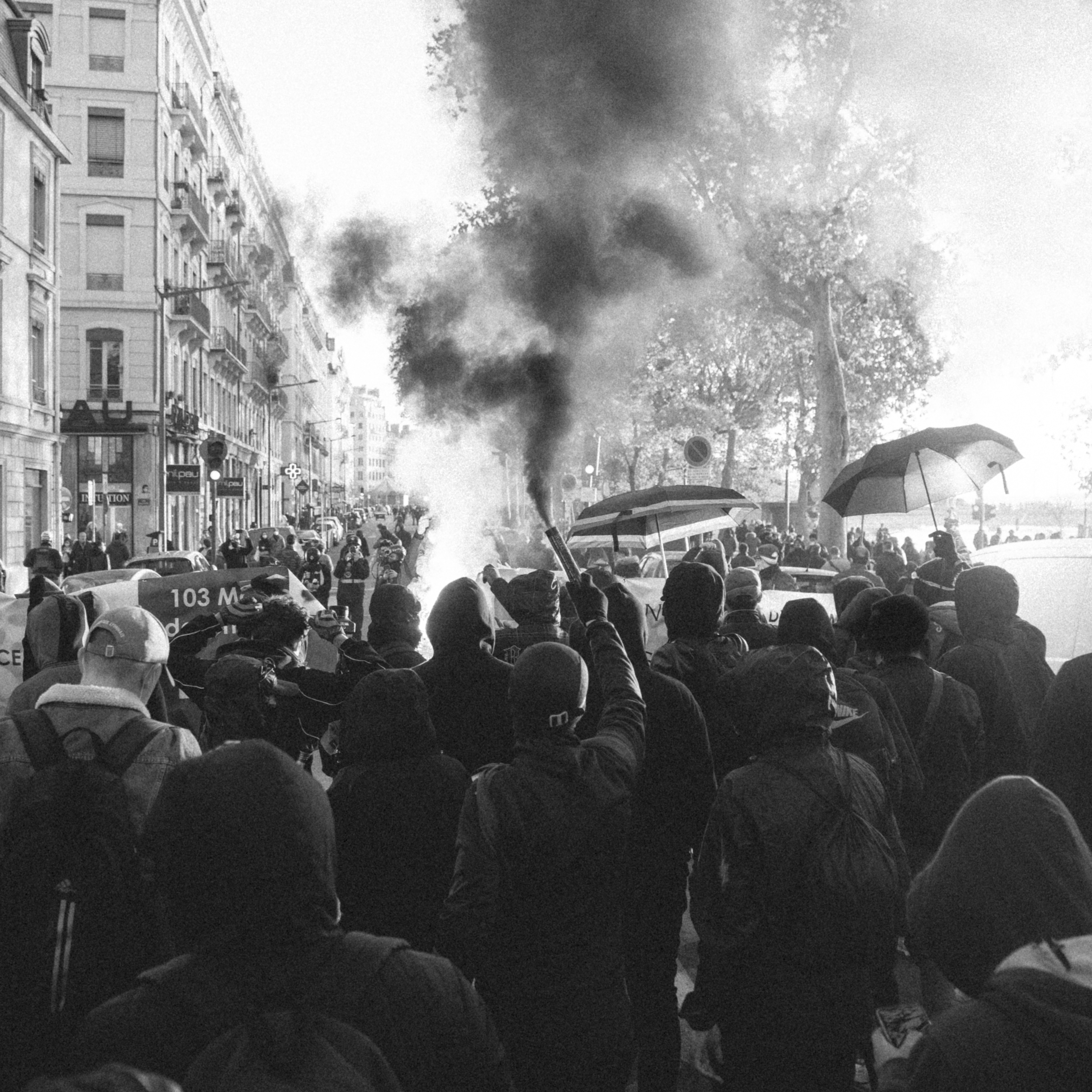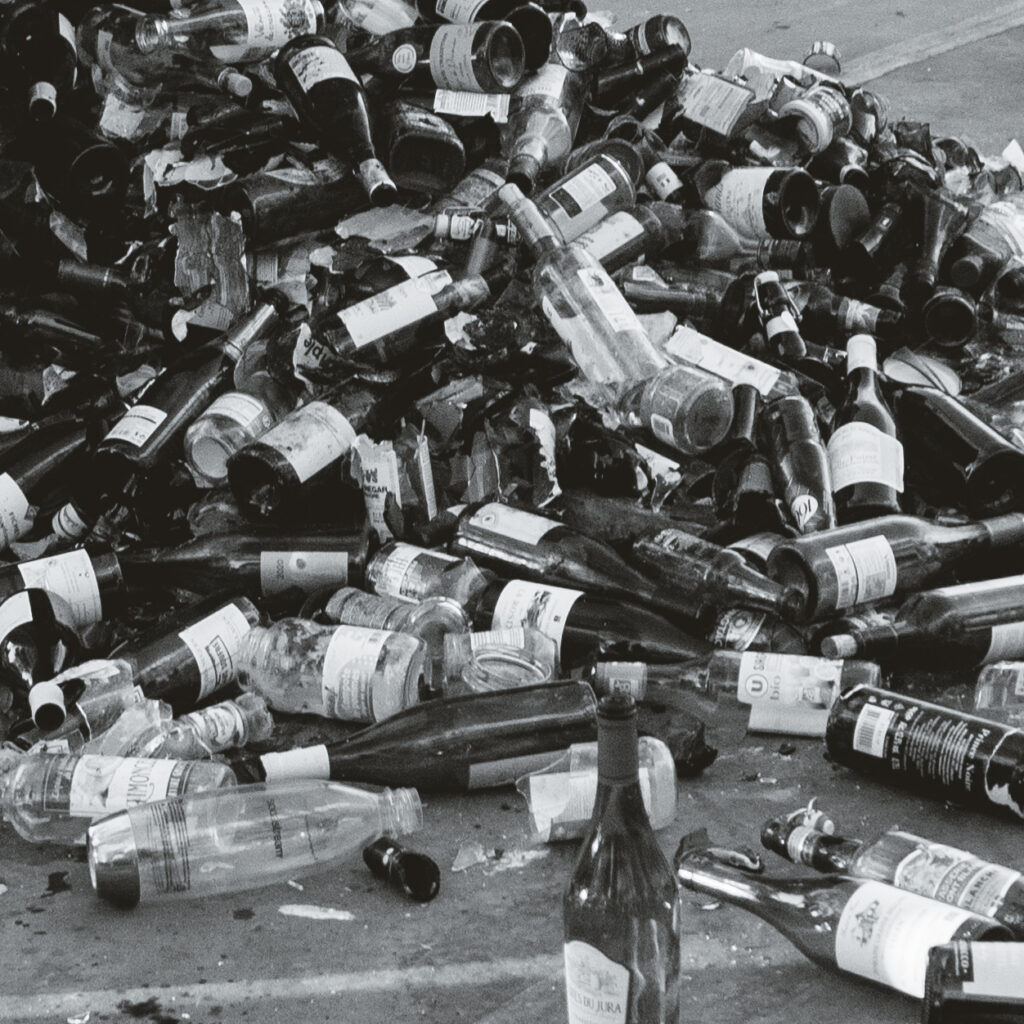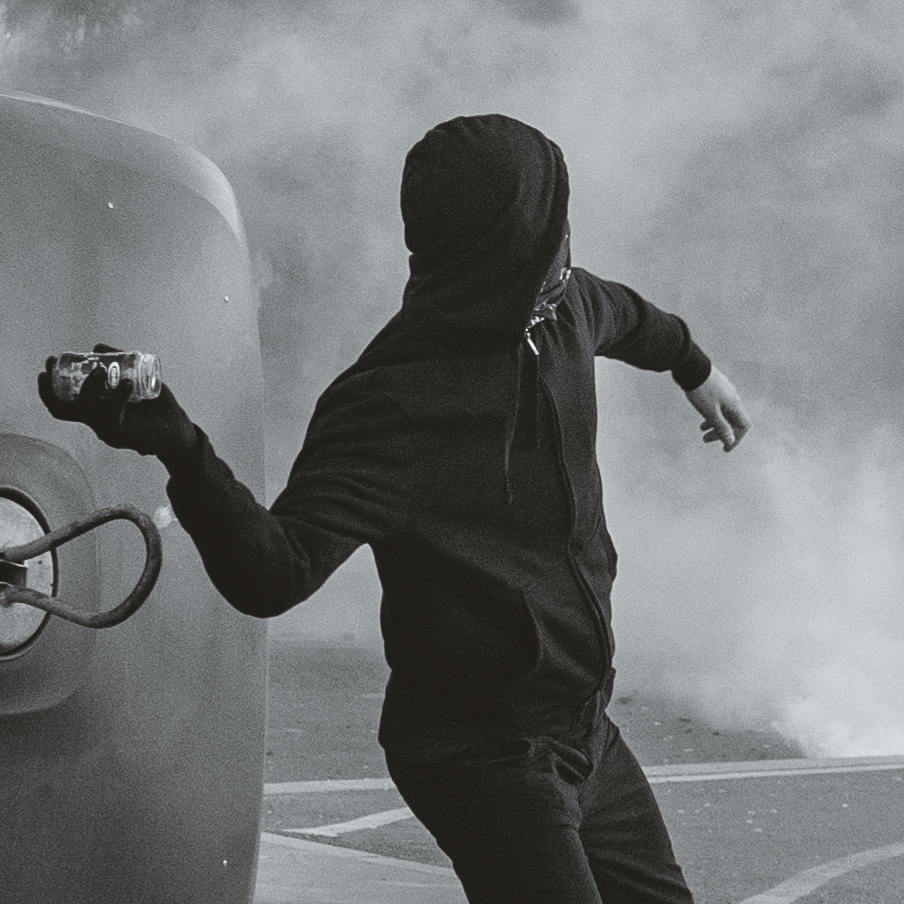Arthur Perrin
« Les détails du bloc »
Arthur Perrin delights us with protest and riot photos, which have adorned the back covers of most of our issues now!
To delve deeper, we wanted to revisit his famous “Bloc details” series and expand our understanding of his most recent work, reviving an old legend of the Vosges forests (a place in the northern east part of France)! From the Molotov cocktail to the Vosges pine tree, it’s only a step closer!
| Interview by Polka B. – Translated by NinoFutur

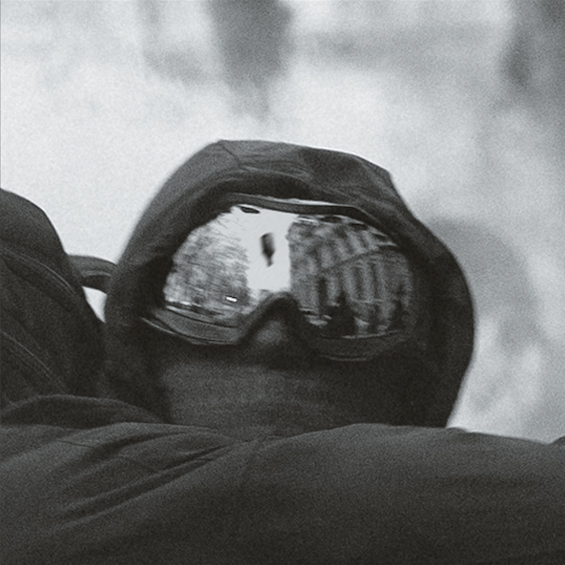
How did you started photography?
AP : I’ve always been into it, especially video, since I was 8 years old. Editing short movies… I wanted to go to cinema school. The recommended path for getting into a cinema school was a BTS (Higher National Diploma on Image Studies) to gain a wealth of technical knowledge. I gravitated toward photography, thinking it would be useful for everything else. Ultimately, during my first protests in Lyon, I loved the “reportage” aspect of photography. It captured a certain reality, something I didn’t do at all with video, where I was more into fiction. I realized I could have just as much fun with “reality.”
Were you in Lyon for your studies?
Right! For my two years of BTS (Higher National Diploma in Technology). In the end, I never went to any cinema school, and I returned home in the Vosges. Today, I’m more of a photographer than a videographer.
What’s remarkable about you is the fact that you connect your intimate vision, to your photos. For you, it’s your own feelings that inform your work.
Completely. The neutral perspective has never appealed me. I’m not into photojournalism with a so-called objective perspective.
My first experience as a reportage was in an eco-village. I lived there for a while as an inhabitant. I couldn’t distance myself from my feelings. I wanted to convey my perspective.
To report on what I had experienced. It’s liberating to be in that register.
During these demonstrations, as part of your series Les Détails du Bloc (« Details from the block »), what did you want to convey?
In a way, photography served as my first step into social movements. It was especially around the time of the “global security” law protests. This type of large demonstration was new to me. The Black Bloc thing intrigued me.
At first, I was really into reporting. But it wasn’t very relevant. What really interested me was autonomy. How, as an individual, we can decide to free ourselves from unions and established structures to choose another type of action. I’m politically minded and have an independent sensibility. I dressed like someone from the block to blend in and capture its energy, its mode of action, and whats happening inside.
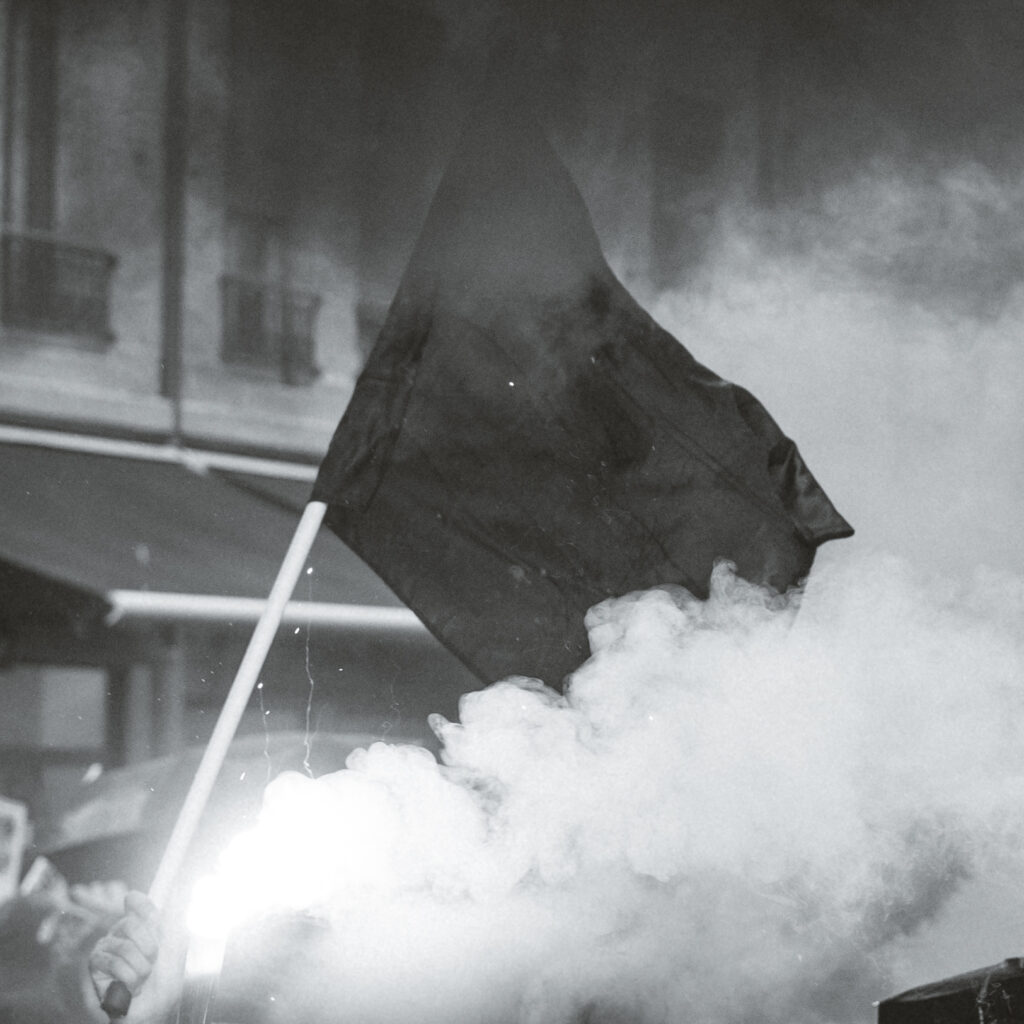
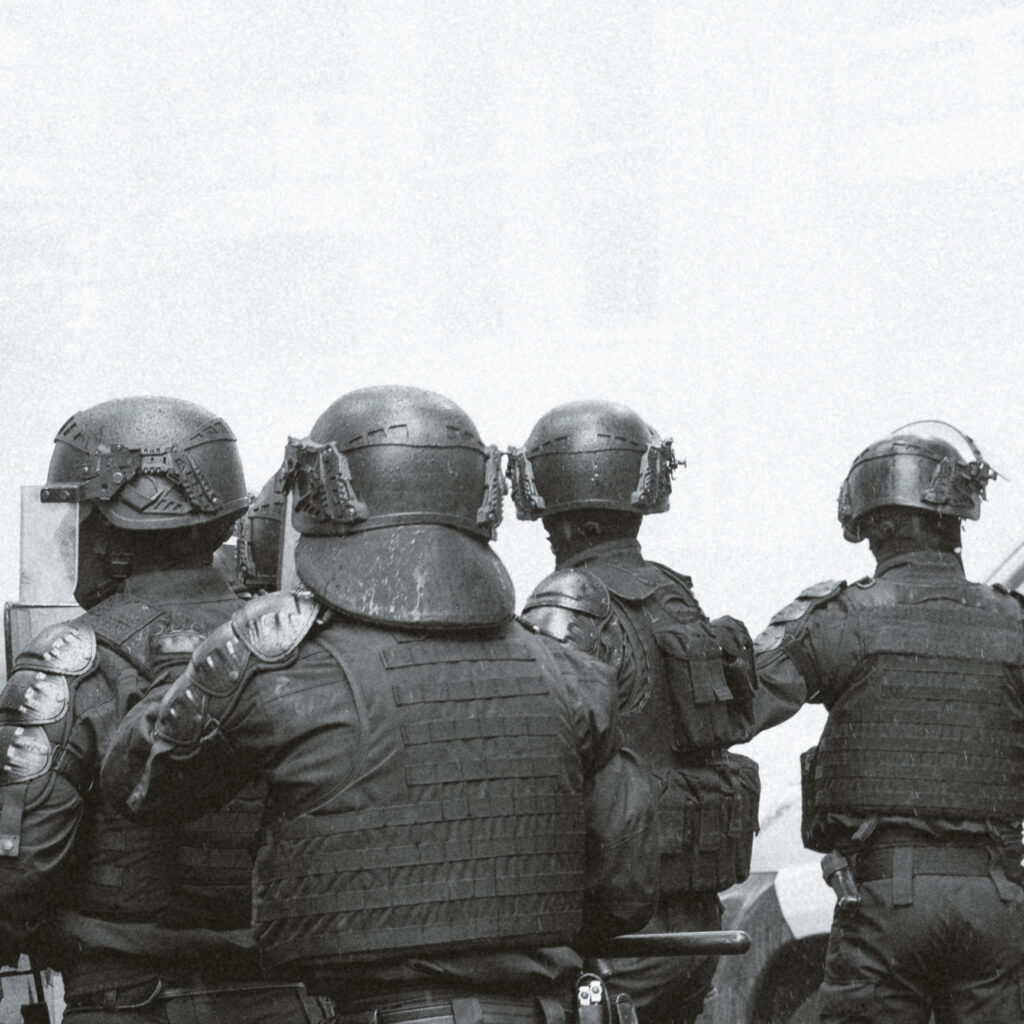
A year later, I delved back into my archives. The angles were very wide. What interested me was what was at the back of the frame. So, I started zooming in on my photos. Picking out the details. That’s how I created the beginning of the series « Les Détails du Bloc ». At first, I didn’t allow myself to reframe too much. The culture of photography in general is to leave it as it is. But I enjoyed exploring though these details. Crazy things were happening that I hadn’t necessarily seen at first.
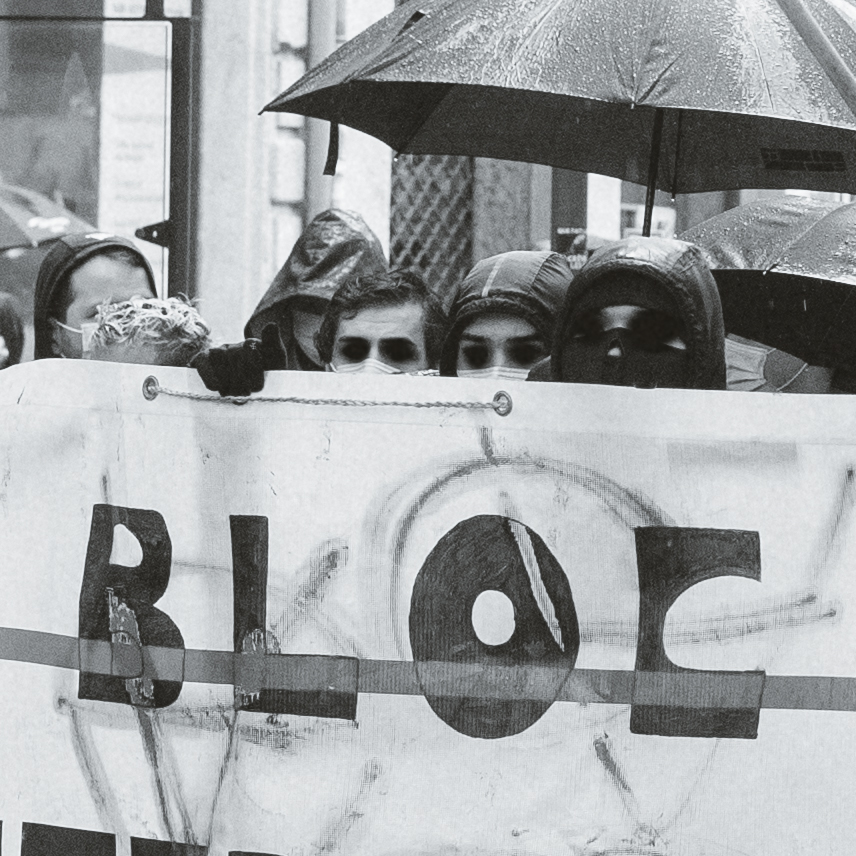
What would you say to people who think this is “riot porn”? That it just aestheticizesing the protest, without deeply addressing the political content of the protest?
When I researched the Bloc, I became very interested into protest strategies. Basically, it’s about using the spectacular in a society of spectacle, with the aim of making yourself heard. It’s about attracting cameras, to highlight the political message. That’s why I opted for black and white. The text is very important to me. It was about explaining the photo, rather than relying solely on aesthetics. If I don’t have any images outside of the Bloc, it’s because the rest didn’t interest me, honestly.
But your question is relevant, because conversely, we also run the risk of aestheticizing the police. It’s as if we’re romanticizing repression. That was something that really bothered me.

What’s unique about your work is that there’s no middle ground between capturing urban life and taking photos of nature far from cities.
I imagine this reflects your immediate environment, because after leaving Lyon, you returned to the Vosges. How do you connect these two worlds?
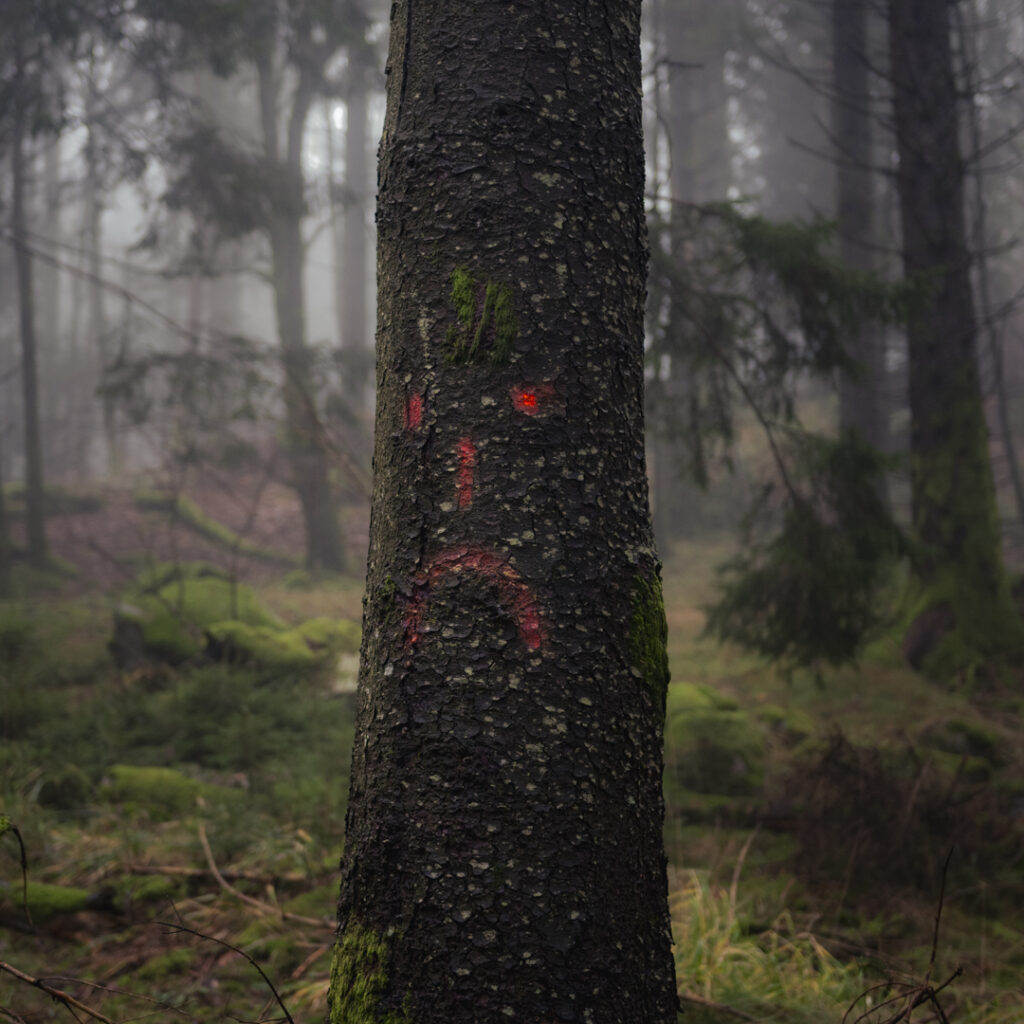
There’s a connection, because I became politically involved through ecology. When I came back from Lyon, it’s true that I was lost. I no longer had any protests to photograph, but at the same time, I felt like I’d reached the end of something.
Nature interests me a lot, especially its wild and mysterious aspects. I like this idea of the mystical. You know there are animals in this spaces, but you’ll never see them. That’s what interests me.
So, I turned to an old Vosges myth: the legend of Houéran. He’s a protector of the forest, half-man, half-goat, who attacks wood thieves, poachers, and anyone harmful to environment. I’m working to connect this myth to the current reality of the Vosges forest.
That’s why I meet with many professionals and people close to the forests to better understand it. I mix both.
I connect the legend, the myth, with realism and documentary aspect. In some of my photos that have a realistic appearance, there will always be a heaviness. An atmosphere. An imaginary scope.
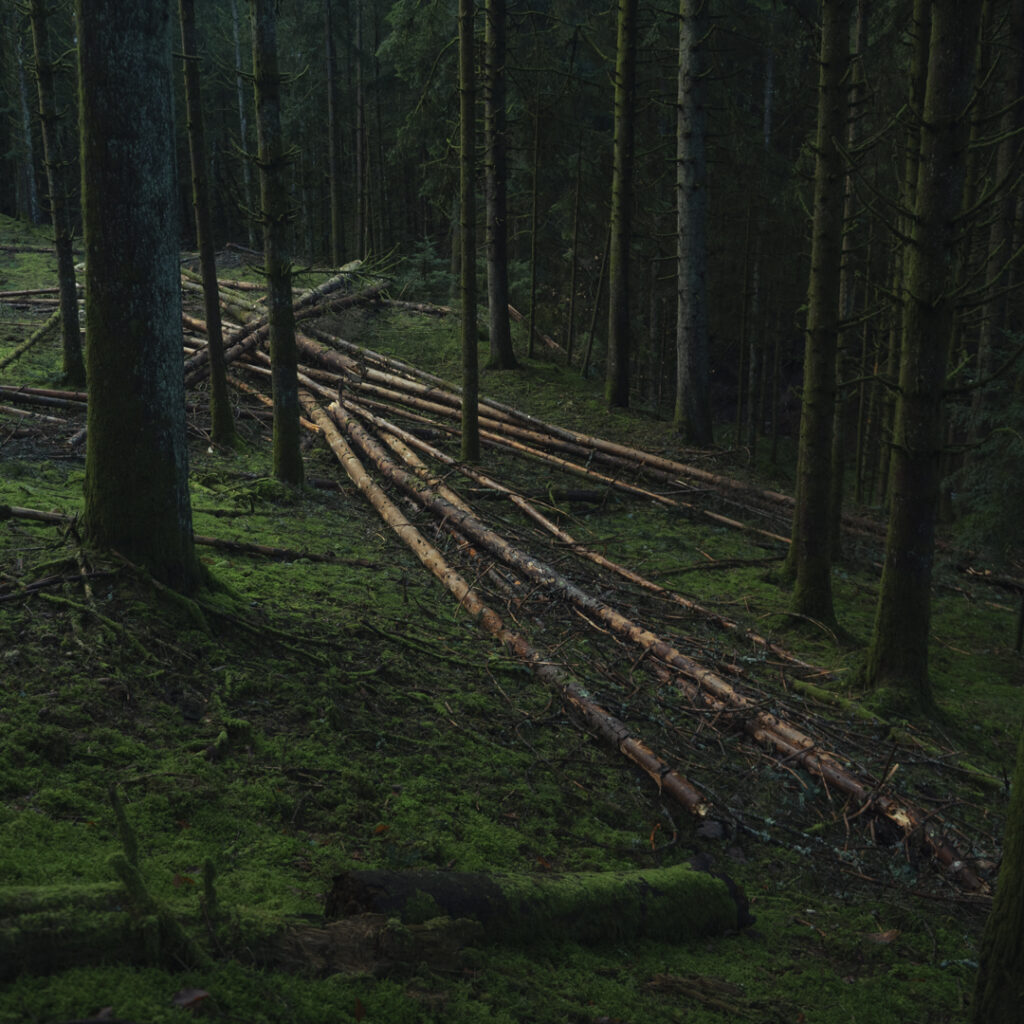
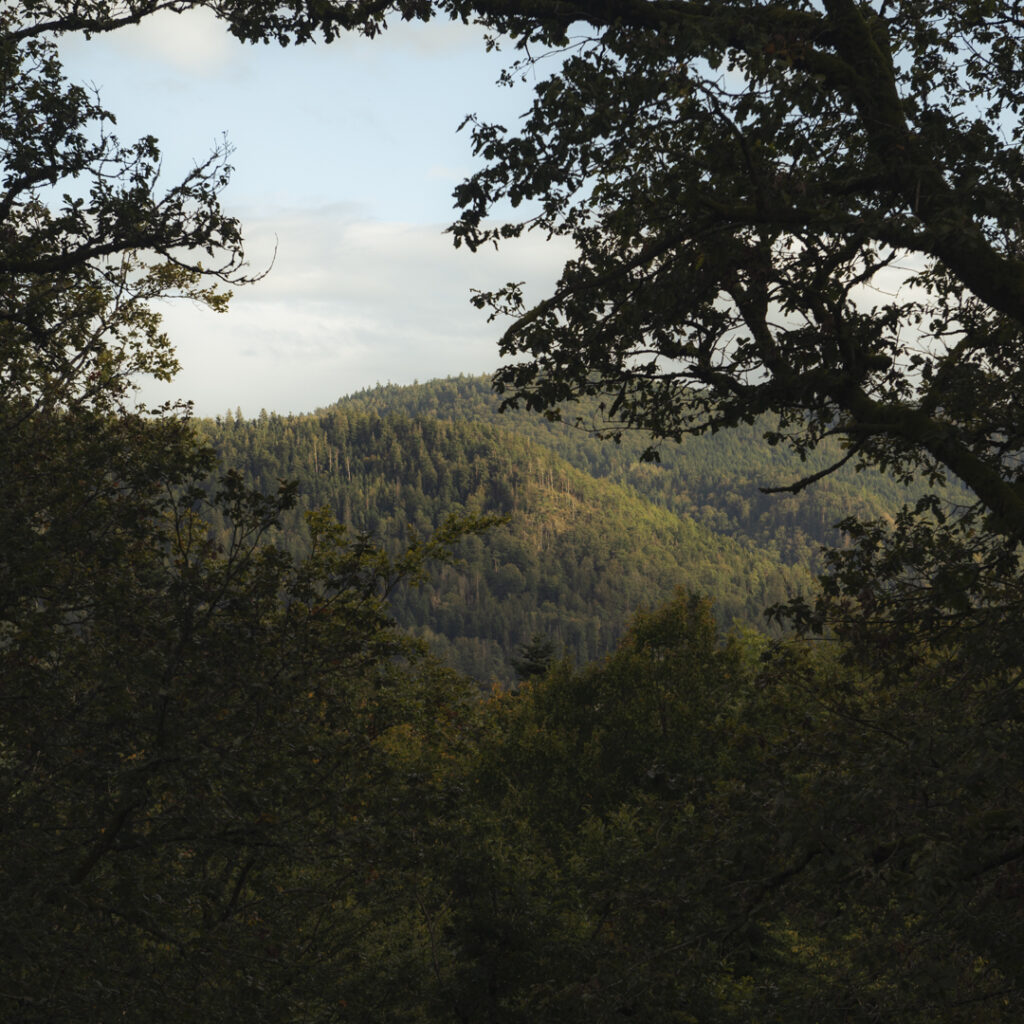

Do you have plans to do photo series elsewhere? Any excuses to travel?
Not necessarily. For now, this project is taking up a lot of time. I want to do it well. It will take me a while before I officially release it.
If I project myself, I think the location isn’t important to me. It’s the theme that counts. Ecology, or subjects that are important to me: work, nostalgia, time passing by, how I spend my life…
What are your other projects?
I want to create a fanzine to talk about the Vosges forests. Discuss about the current problems, different solutions…
Couldn’t the legend of Houéran be carried out by local people who care about forests? It could be called “Le Houéran revient” ( Houéran Returns). I’m definitely going to get started on it! I really want to write and be present into informationnal kiosks with it!
